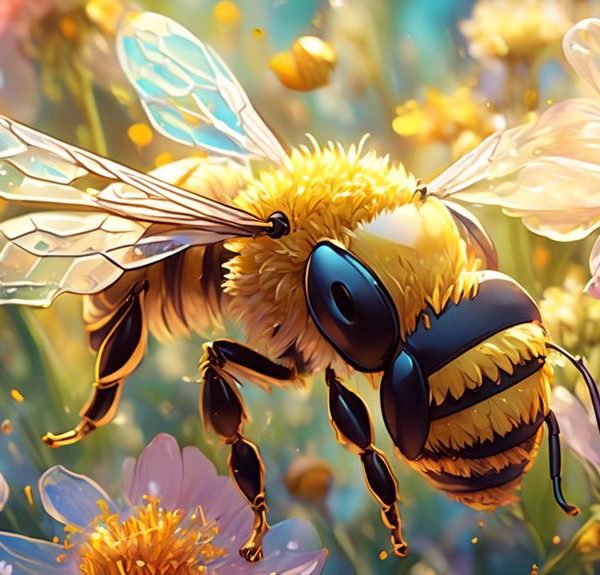Worried about beeswax stains ruining your clothes? Discover effective solutions to this common problem and keep your outfits spotless.
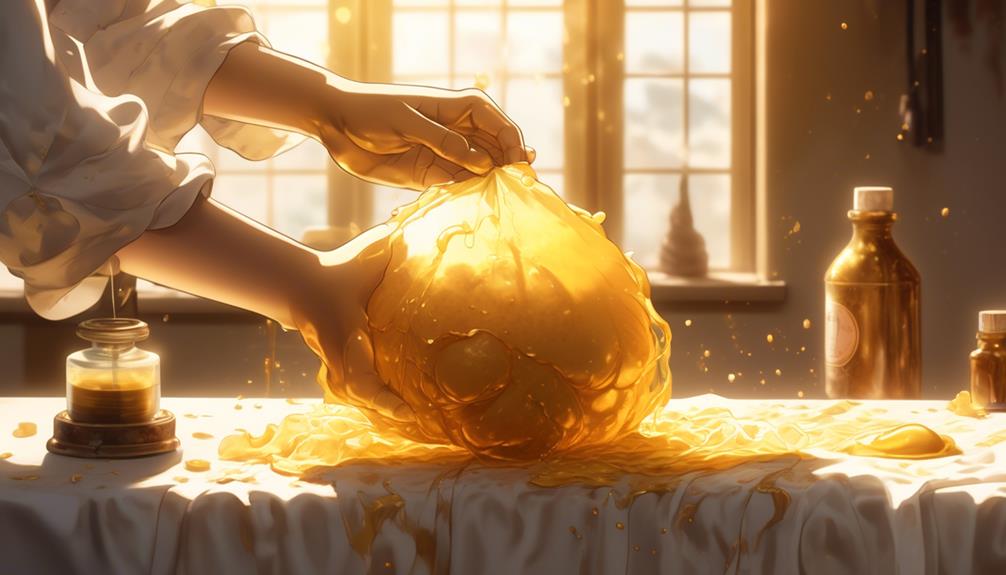
How to Get Beeswax Out of Clothes?
You're at a romantic dinner, and a candle's warm glow is illuminating the room.
Suddenly, you notice a drip of hardened beeswax on your favorite blouse.
Don't panic; it's not the end of the world, and you're not the first to encounter such an issue.
There are effective methods to tackle this problem and restore your clothes to their former glory.
Stick around, and soon you'll be equipped with the know-how to make beeswax stains a thing of the past.
Key Takeaways
- Beeswax stains are difficult to remove because they are not dissolved by water.
- Freezing the garment before removing the wax can help harden it for easier removal.
- Using heat from an iron and a barrier like brown paper can absorb the melting wax.
- After cleaning, thoroughly rinse the fabric and air dry to prevent unseen wax from setting.
Understanding Beeswax Stains

Before you can effectively tackle beeswax stains on your clothes, it's essential to comprehend what you're up against. Beeswax isn't your typical stain; it's a complex mix of fatty acids, hydrocarbons, and esters. It's a natural wax produced by bees and is often used in products like candles, lip balms, and lotions.
When beeswax ends up on your clothing, it can be a real challenge to remove. Unlike water-based stains, beeswax isn't dissolved by water, which can make it tough to get out. It's also sticky, which means it can adhere stubbornly to the fibers of your clothes, clinging on even after a regular wash cycle.
But don't worry, understanding the nature of beeswax stains is half the battle. It's all about knowing how to break down that waxy, sticky substance and remove it from your clothes without causing any damage. It may require a bit of patience and some special techniques, but with the right approach, you can effectively deal with beeswax stains.
Necessary Materials for Removal
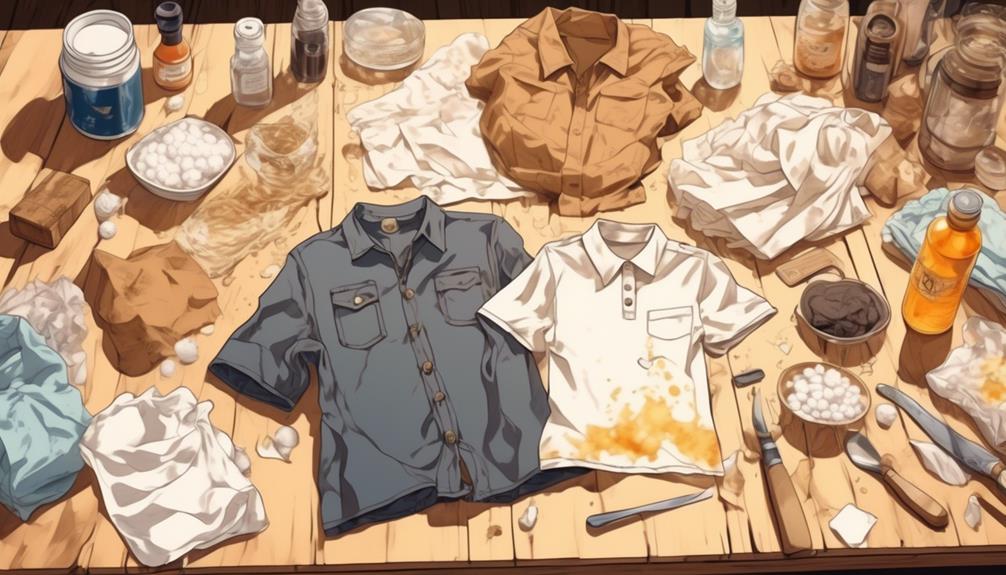
Arming yourself with the right tools is the first step in your beeswax removal mission. You'll need the right materials to effectively and safely remove the wax from your clothes without damaging the fabric. These materials aren't exotic – they're common household items that you probably already have on hand.
Now, let's get straight into the list of the necessary materials. I've compiled a handy table to make it easy for you to gather everything you need:
Material | Use | Where to Find |
|---|---|---|
Brown craft paper or brown paper bag | To absorb the wax as it's heated | Grocery stores, craft stores |
Iron | To heat the wax and make it easier to remove | Your laundry room |
A dull knife or spoon | To scrape off the wax | Your kitchen |
Laundry detergent | To wash out any remaining wax and stain | Grocery stores, convenience stores |
White vinegar | To treat any remaining stain | Grocery stores, convenience stores |
Initial Steps to Take
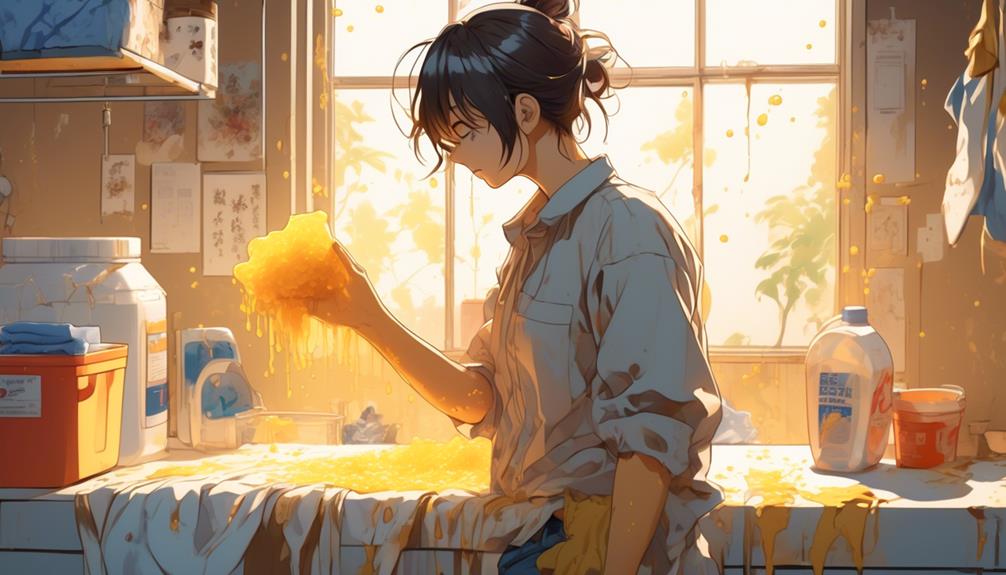
Once you've gathered all your materials, it's time to tackle the task of getting the pesky beeswax out of your clothes. The first step is to pop your garment in the freezer. This hardens the wax, making it easier to remove. Leave it in for at least an hour, although overnight is best if you've got the time.
Once frozen, gently scrape off as much wax as possible using a dull knife or a credit card. Be careful not to damage the fabric. This is an important initial step, as it removes the bulk of the wax and preps your clothing for the next phase of treatment.
Next, lay your garment flat and place a brown paper bag or a clean cloth over the wax stain. This acts as a barrier, preventing the wax from spreading onto your ironing board in the next step. Set your iron to a low heat setting – too high, and you risk scorching the fabric. Gently iron over the paper or cloth, which will absorb the melting wax.
Detailed Cleaning Process

Now that you've prepped your garment, it's time to dive into the detailed cleaning process to ensure every last bit of beeswax is removed. First, you'll need to wash the garment with warm water and a mild detergent. This should help to break down the beeswax.
Next, you're going to use a beeswax cleaner. This is a specific product designed to remove beeswax from fabric. Apply it to the stained area and gently scrub with a soft brush. Make sure you're following the instructions on the cleaner's label.
Finally, rinse the garment thoroughly and then launder as usual. Once it's dry, inspect it to see if any beeswax remains. If so, repeat the process.
Here's a handy table summarizing the process:
Step | Action |
|---|---|
1 | Wash with warm water and mild detergent |
2 | Apply beeswax cleaner and scrub gently |
3 | Rinse, launder, and inspect for remaining beeswax |
Aftercare and Prevention Tips
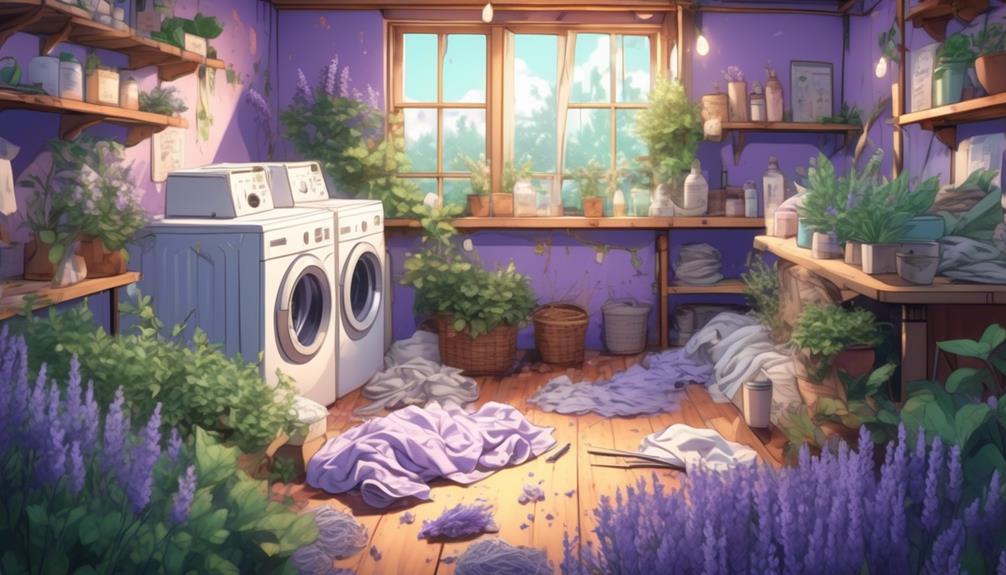
Having successfully tackled the removal of beeswax from your garment, let's explore some essential aftercare measures and prevention tips to keep your clothes pristine.
After cleaning, it's crucial to thoroughly rinse the fabric in warm water to eliminate any residual detergent or wax traces. Following this, allow the garment to air dry. Don't rush the process by using a dryer as heat can cause any unseen wax to set into the fabric.
Prevention is always better than cure. To avoid dealing with stubborn beeswax stains in the future, be mindful when handling beeswax or any wax-based products. Wearing an apron, or clothes that you wouldn't mind getting stained, can save you from a lot of hassle.
If you find yourself frequently working with beeswax, consider investing in some protective clothing or fabric that's easy to clean. Should a spill occur, act immediately. The quicker you start the removal process, the easier it will be to get rid of the stain.
Beeswax is a natural product and is fantastic to work with, but it can be unforgiving when it comes to stains. Proper care and prompt attention to spills will help maintain the impeccable state of your wardrobe.
Frequently Asked Questions
Can Beeswax Stains Cause an Allergic Reaction?
Typically, beeswax stains shouldn't cause an allergic reaction. They're basically composed of natural compounds. However, you might react if you're sensitive or allergic to bee products.
For instance, if honey causes you problems, beeswax might too. It's also possible that traces of pollen or propolis in the beeswax could trigger a reaction.
If you notice any itching or redness, it's best to remove the stained clothing and wash the area with soap and water.
What Are the Environmental Impacts of Using Chemical Beeswax Removers?
You're right to be concerned about the environmental impacts of chemical beeswax removers. They often contain harsh substances that can pollute waterways when washed down the drain. Additionally, their production and disposal contribute to air pollution and waste.
It's better to look for eco-friendly alternatives or use simple home remedies. They're not only kinder to the environment, but also safer for you to handle.
Can Beeswax Stains Alter the Texture of the Clothing Material Over Time?
Yes, beeswax stains can alter the texture of your clothes over time. If left untreated, the wax hardens, embedding itself into the fabric. This results in a stiff, rough patch that's not only unsightly but also uncomfortable.
It's important to remove beeswax stains as soon as you notice them to preserve the texture and appearance of your clothes. Don't worry, there are simple, effective methods you can use to get rid of these stubborn stains.
Are There Any Specific Types of Fabric That Beeswax Is Harder to Remove From?
Yes, there are.
Beeswax tends to be more difficult to remove from porous, textured fabrics like wool or corduroy. It seeps into the fibers, making it tough to get out.
Synthetic fabrics like polyester can also be tricky due to their heat sensitivity. You'll have to be careful not to melt them while trying to remove the beeswax.
Smooth, natural fibers like cotton and silk are generally easier to clean.
Can Using Heat to Remove Beeswax Damage My Clothes?
Yes, applying heat can potentially damage your clothes, especially if they're delicate or the heat's too high. It's crucial you're careful to not overheat the fabric. You can place a thin cloth between the beeswax stain and the heat source for protection.
Also, always check the garment's care label before proceeding. If you're unsure, it's best to seek professional cleaning advice or services to avoid ruining your clothes.
Conclusion
And there you have it! Now you're equipped with the knowledge and skills to tackle those pesky beeswax stains. Remember, patience is key to successful removal.
With prompt action, the right tools, and a bit of elbow grease, you can restore your clothes to their former glory. Keep these tips in mind for future spills, and you'll never be caught off guard again.
Good luck, and happy cleaning!


